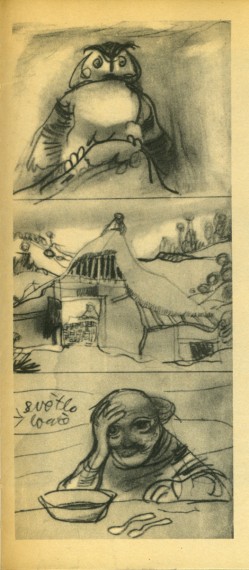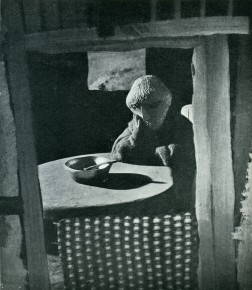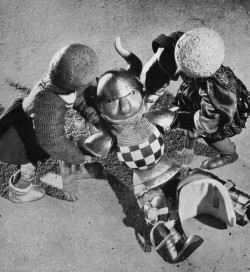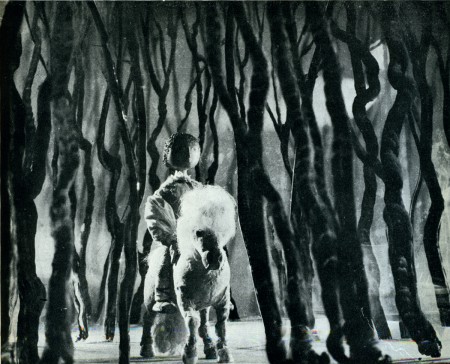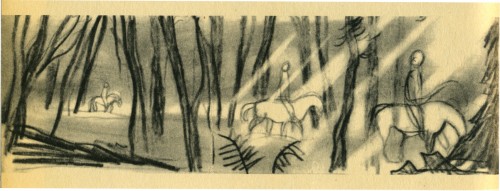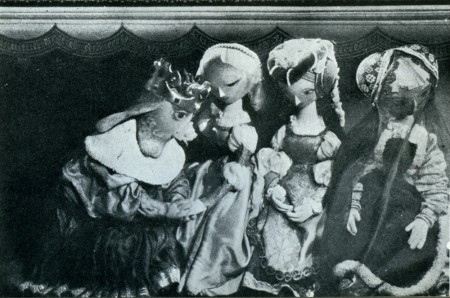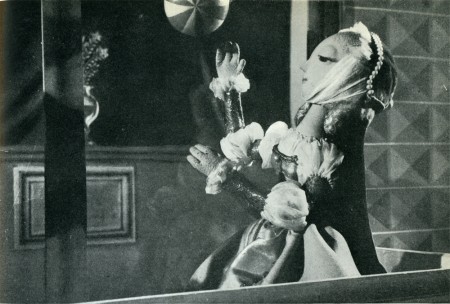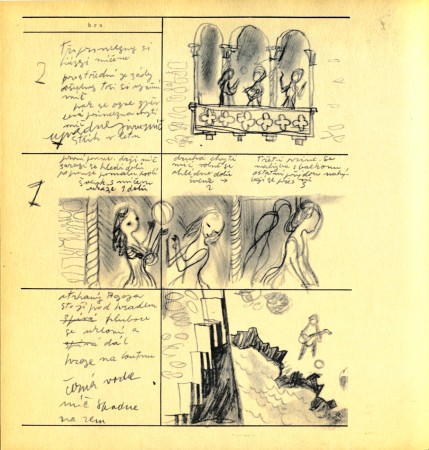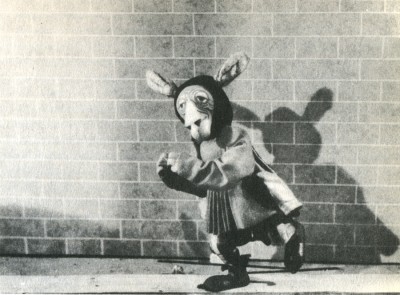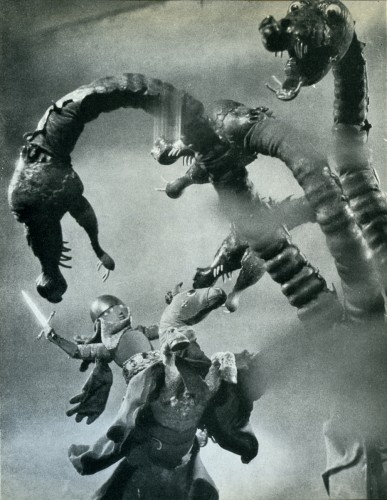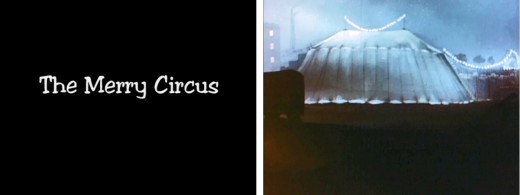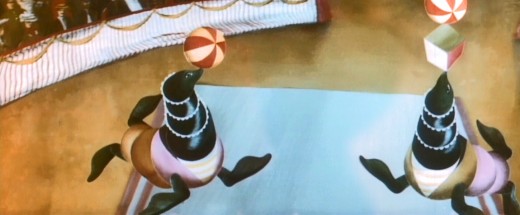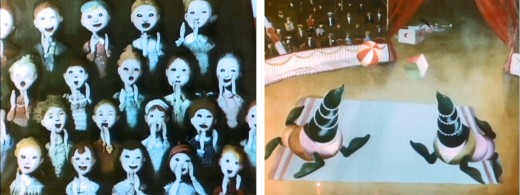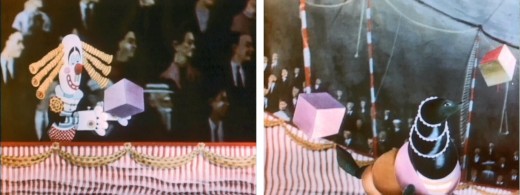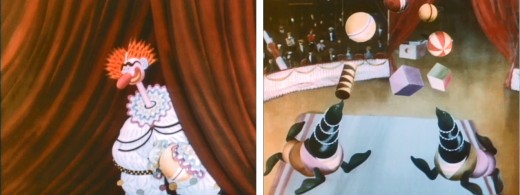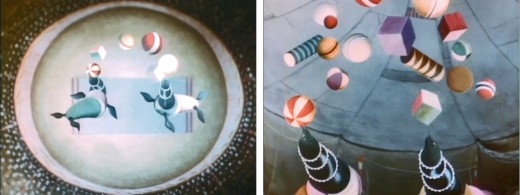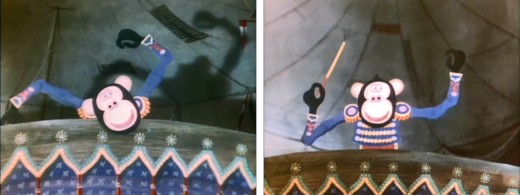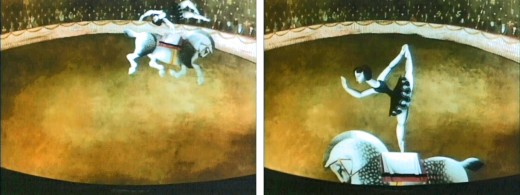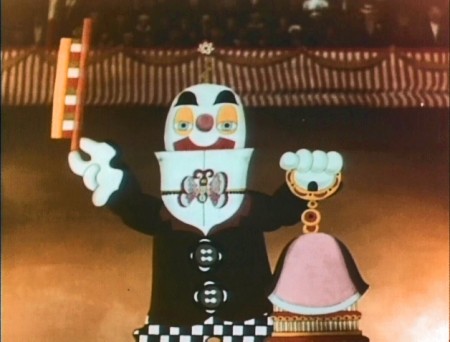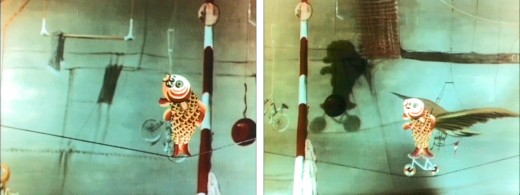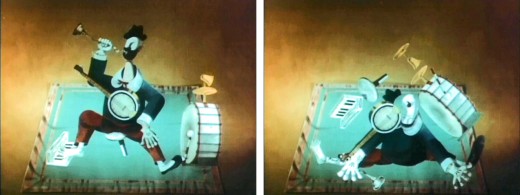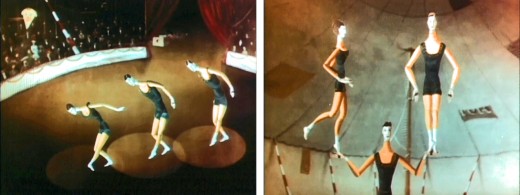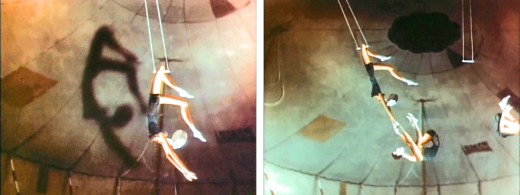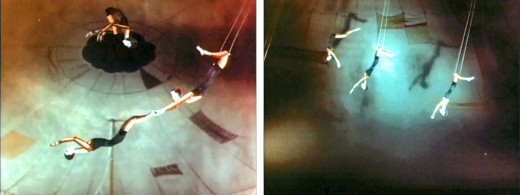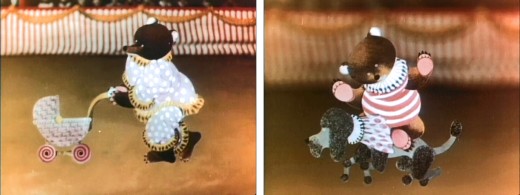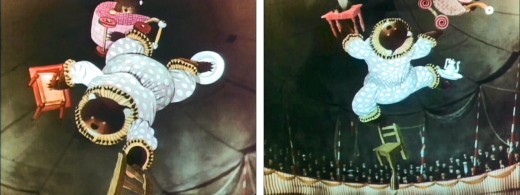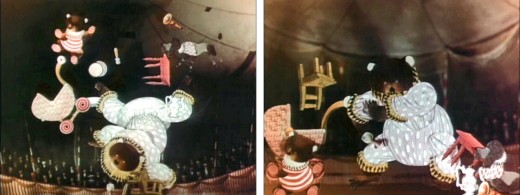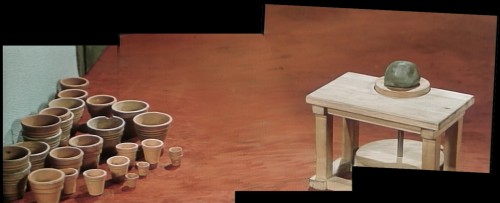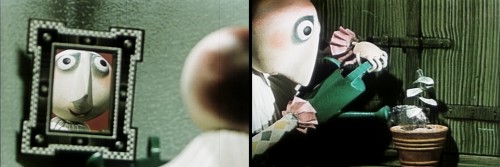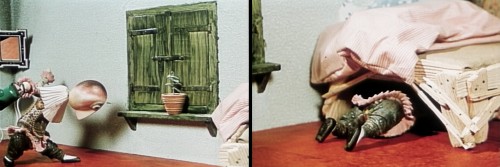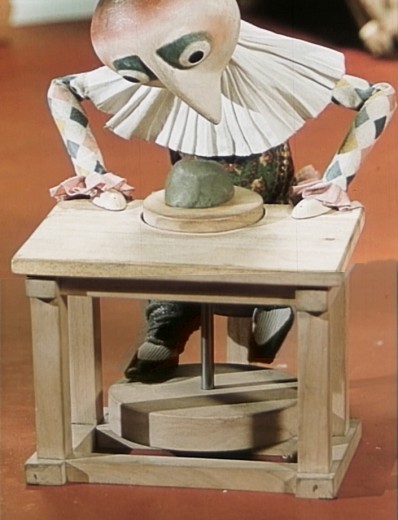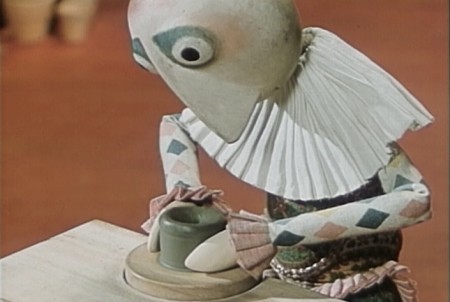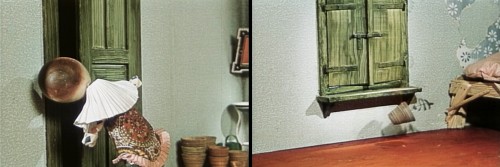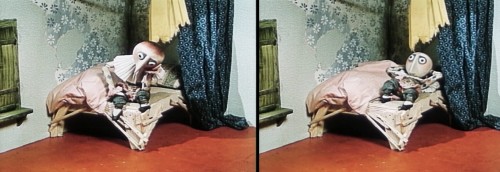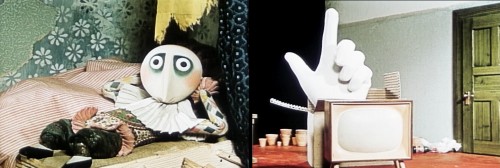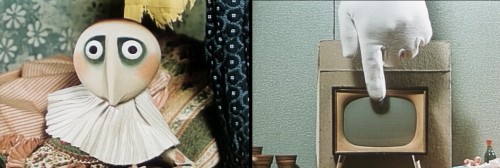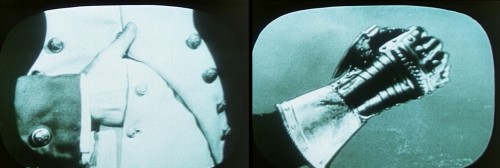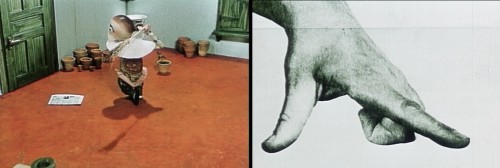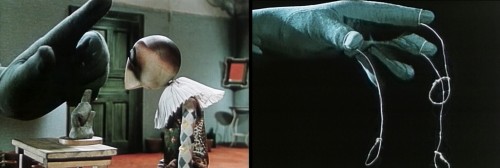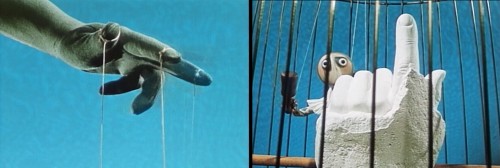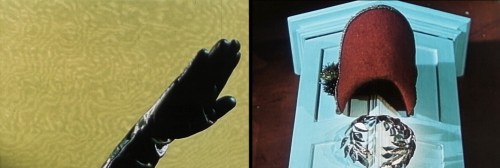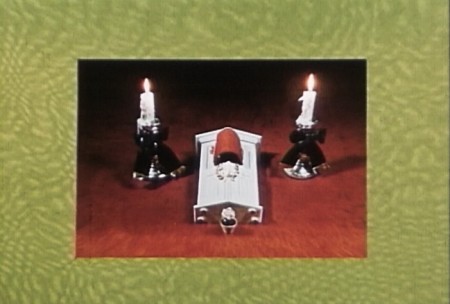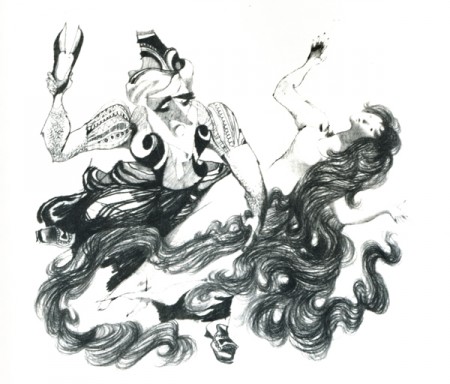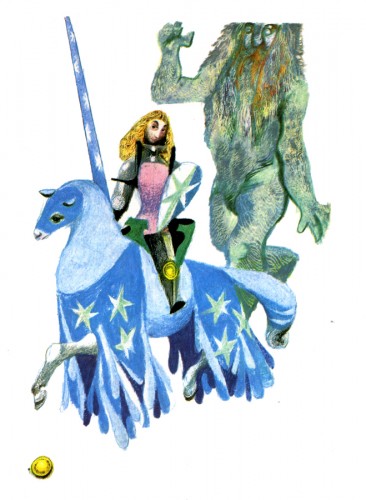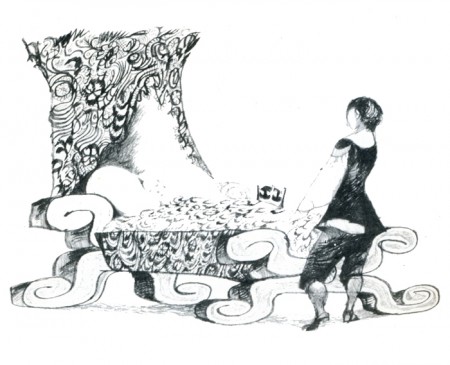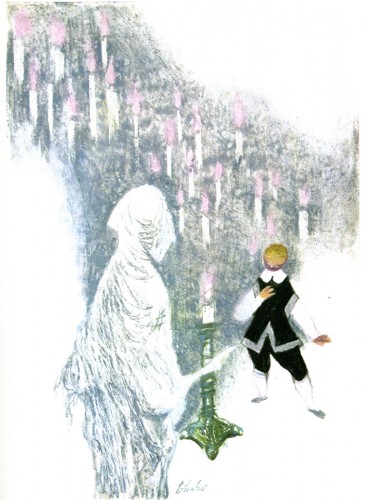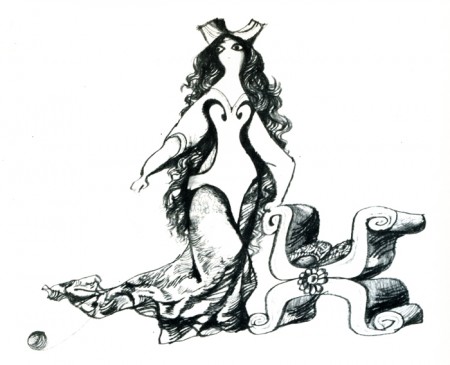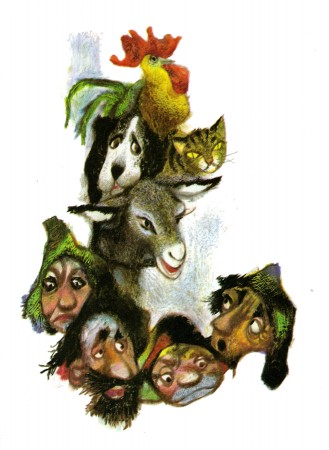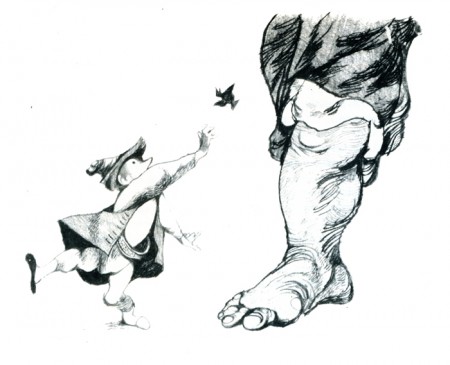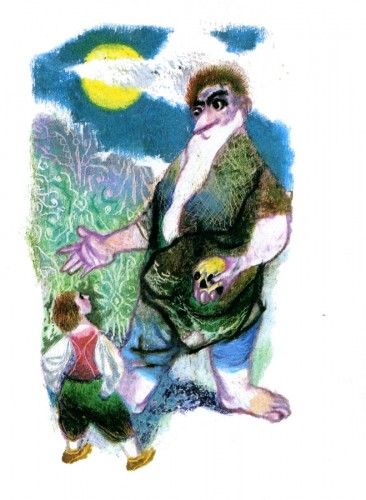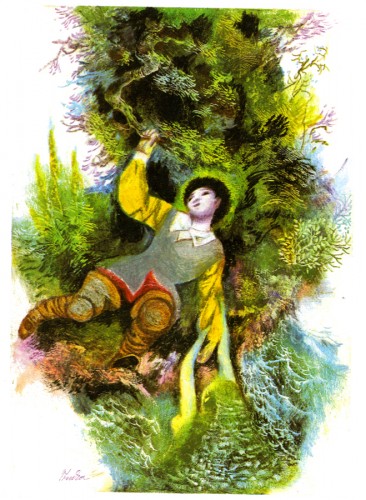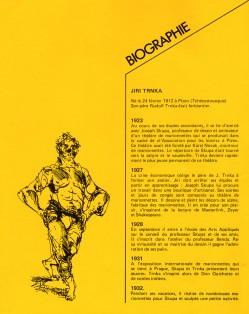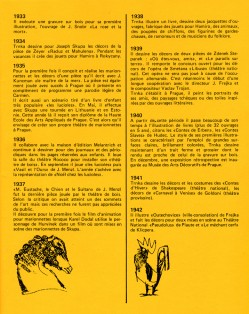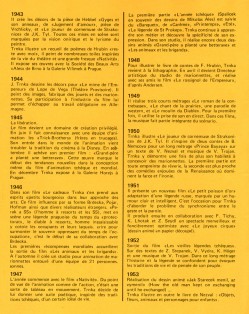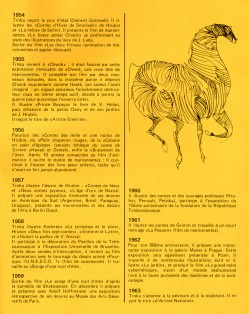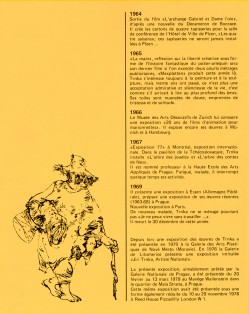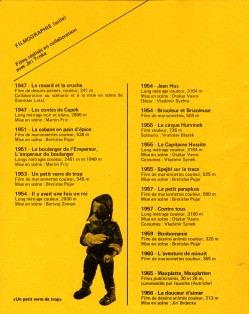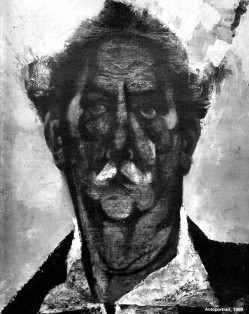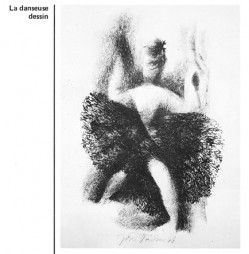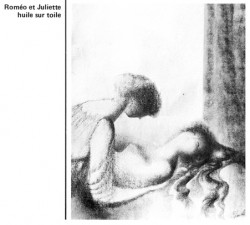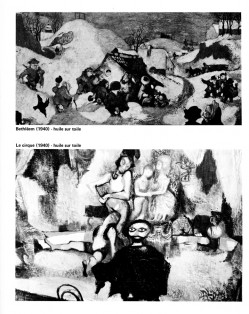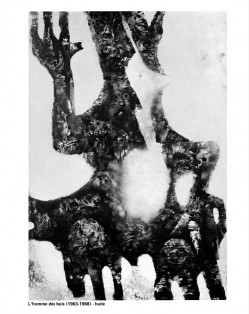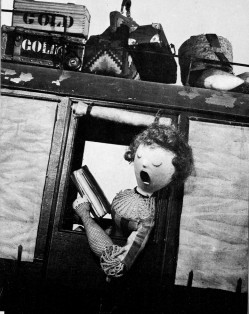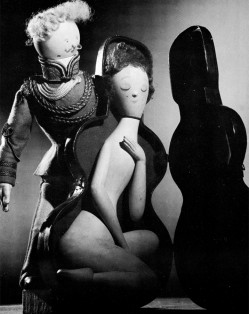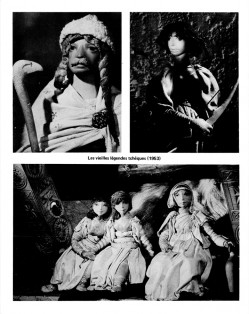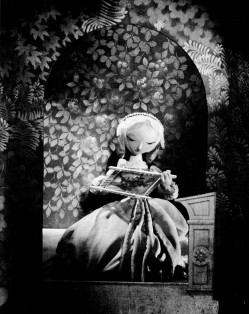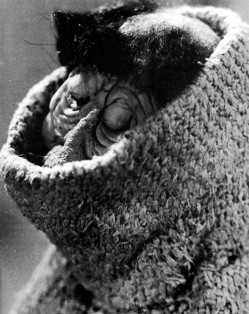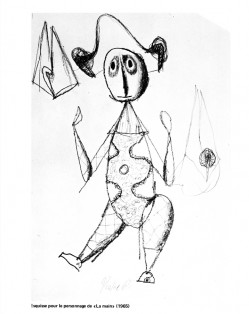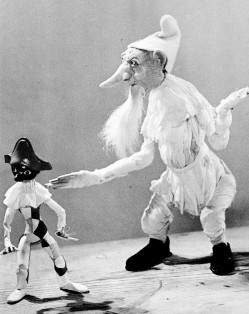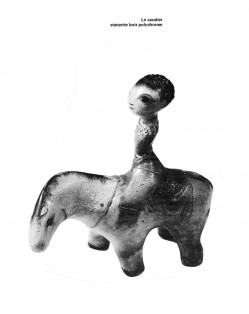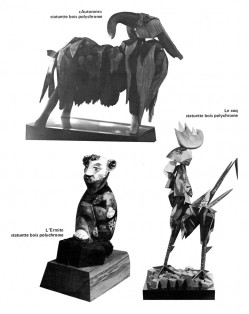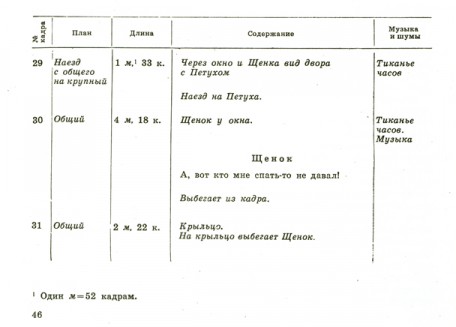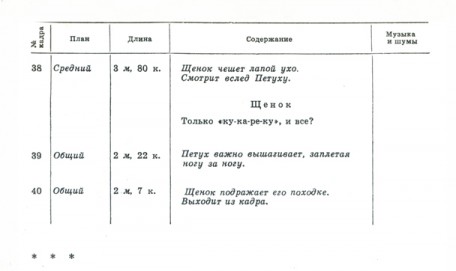Category ArchiveTrnka
Animation &Books &Commentary &Puppet Animation &Trnka 20 Aug 2013 02:32 pm
Trnka’s “Bayaya” repost
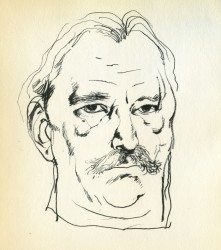 – Early in the history of this blog, I wrote quite a bit about Jiri Trnka. This man’s artwork has long been a source of great inspiration to me. His illustrations for the fairy tales of Grimm and Andersen are stunning and the two books are of inestimable value to me. His puppet films are so brilliantly strong and lyrically beautiful that I was overwhelmed when I first saw them, even though his reputation preceded them. I’d read enough about him and owned a magnificent biographical account of his work, that I was confident I would be a bit disappointed when I finally saw the films. I wasn’t.
– Early in the history of this blog, I wrote quite a bit about Jiri Trnka. This man’s artwork has long been a source of great inspiration to me. His illustrations for the fairy tales of Grimm and Andersen are stunning and the two books are of inestimable value to me. His puppet films are so brilliantly strong and lyrically beautiful that I was overwhelmed when I first saw them, even though his reputation preceded them. I’d read enough about him and owned a magnificent biographical account of his work, that I was confident I would be a bit disappointed when I finally saw the films. I wasn’t.
The Hand was magnificent and remains one of my favorite films, to this day.
The Archangel Gabriel and Mother Goose is a beautiful animated puppet film about Venice during the late Middle Ages.
The Midsummer Night’s Dream is a feature-length masterwork that has to be seen for any lover of animation – nevermind puppet animation.
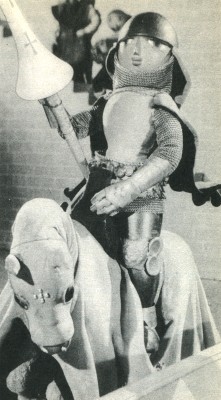 The film, Bayaya was a mystery to me for many years. It was not an easy film to view. Back in the 70s, there was no video, and seeing Trnka’s films meant trips to the NYPublic Library in NY to visit their collection of 16mm films. There you could watch any of the collection or borrow them to watch at home. These films were often littered with many bad splices where the films had broken. The quality of the colors deteriorated over the years. It made for tough viewing, but it also made it possible to see some of the Trnka canon.
The film, Bayaya was a mystery to me for many years. It was not an easy film to view. Back in the 70s, there was no video, and seeing Trnka’s films meant trips to the NYPublic Library in NY to visit their collection of 16mm films. There you could watch any of the collection or borrow them to watch at home. These films were often littered with many bad splices where the films had broken. The quality of the colors deteriorated over the years. It made for tough viewing, but it also made it possible to see some of the Trnka canon.
Bayaya was not part of this collection. In fact, I’ve only seen part of the film once. John Gati, a NY puppet animator who was a good friend, located a copy of a 20 min excerpt (in Czechoslovakian) for an ASIFA-East screening and showed it to a small audience in a classroom at NYU. The print was black and white, but since I’d only seen B&W illustrations, this made sense.
This film represented a strong change for Trnka. He had previously done a number of cel animated films. These shorts were remarkable in that they were a strong step away from the Disney mold. This was a bold step to take in the animation community in Europe circa 1947.
The film was purely lyrical, and the story accented the folk tales quality of these legends of Prince Bayaya and The Magic Sword. Consolidating the two, he named the film after the hero and made him the embodiment of courage, morality and honor.
Trnka considered Bayaya a turning point in his career. He realized that the puppet film had taken on new strength and he had to follow through with every film thereafter.
Here are a couple of scenes from the Trnka book I treasure, Jiri Trnka: Artist & Puppet Master.
There are two parts of a documentary on Trnka available via YouTube. They’re worth the watch. Part 1, Part 2.
repeated posts &Trnka 21 Nov 2011 07:42 am
Trnka’s Merry Circus – repost
 – I’ve been a fan of Jirà Trnka‘s work since I first saw it back in the 60′s. I’ve bought every publication I’ve ever found which discusses or displays his films or illustration. These days I can also own a number of his films.
– I’ve been a fan of Jirà Trnka‘s work since I first saw it back in the 60′s. I’ve bought every publication I’ve ever found which discusses or displays his films or illustration. These days I can also own a number of his films.
His puppet films were always the gold standard of that medium. However, since I’ve studied his illustrations for many years, I’m always interested in the 2D work he’s done.
The dvd titled The Puppet Films of Jirà Trnka includes one of these 2D films. It’s cut-out animation, so it really borders the world between 2D and 3D. Trnka exploits the shadows on his constructed cardboard backgrounds to great effect. The style purposefully hides the three dimensions of the constructions, but it uses it when it needs to. The film is a delicate piece which just shows a number of acts in a local circus setting.
It’s a sweet film with a quiet pace. I’m not sure it could be done in today’s world of snap and speed. No one seems to want to take time to enjoy quiet works of art.
I’m posting a number of frame grabs from this short so as to highlight the piece.
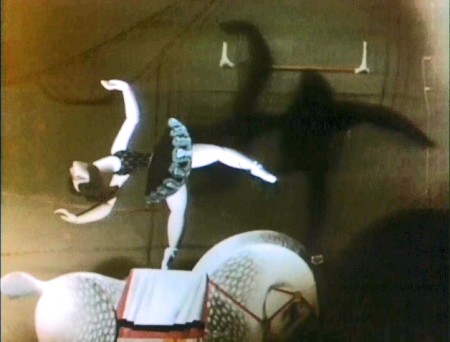
Note the real shadows on the background.
These were obviously animated on glass levels in a multiplane setup.
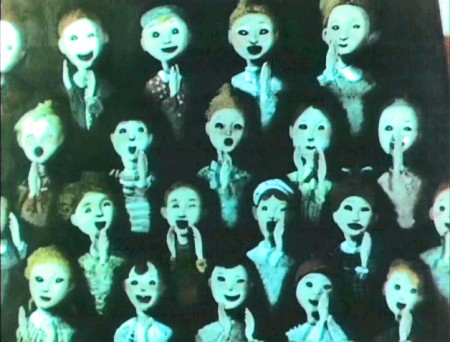
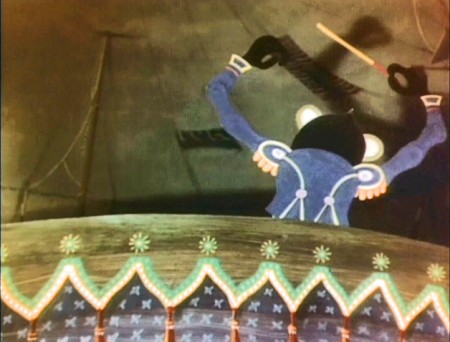
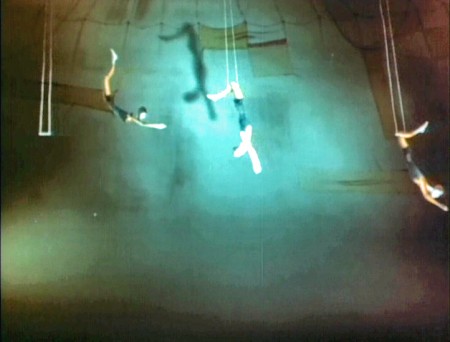
Again, note the excellent use of shadows. It’s very
effective in these long shots of the trapeze artists.
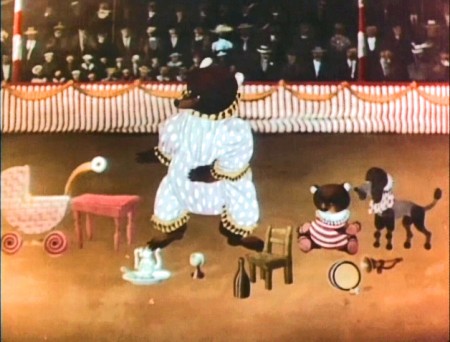
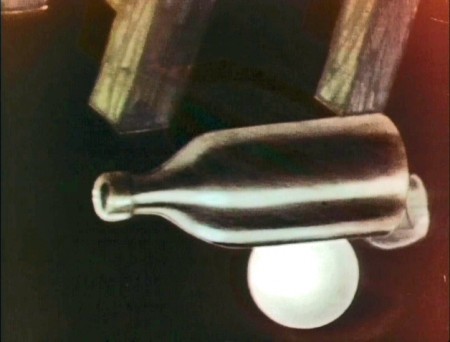
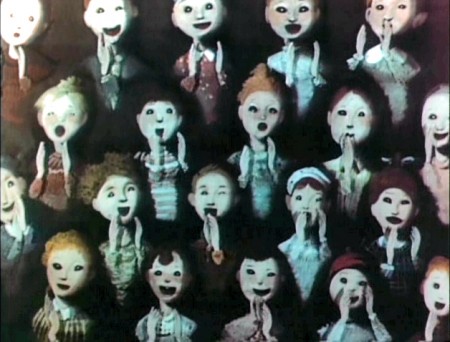
Animation &Frame Grabs &Trnka 03 Jan 2011 08:20 am
The Hand
- I decided this week, I wouldn’t go to a Disney cartoon to give a frame grab display. Instead, I’ve chosen to showcase images from Jiri Trnka‘s brilliant film, THE HAND. This is an anti-totalitarian film done from behind the Iron Curtain when it was forbidden for him to do so. There, presumably, were consequences (though I don’t know any specifics.)
 1
1The film’s title plays in four different languages.
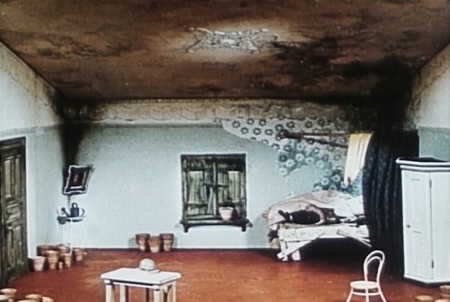 2
2
We see inside the sculpter’s house. LS to . . .
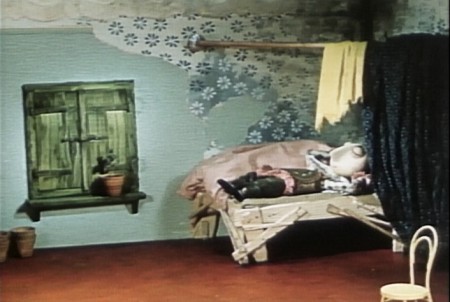 3
3
. . . closer shot of him in bed.
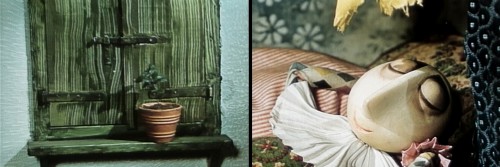 5
5
One plant in a pot in the window.
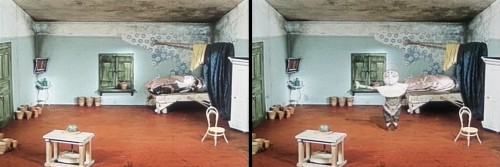 6
6
He gets up, exercises and . . .
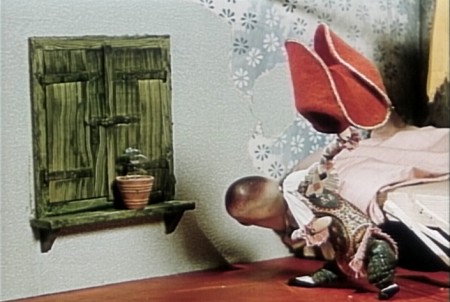 9
9
He says a formal good morning to his plant.
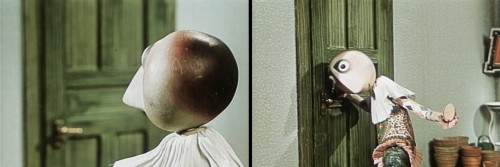 12
12
A loud knock – is it the door?
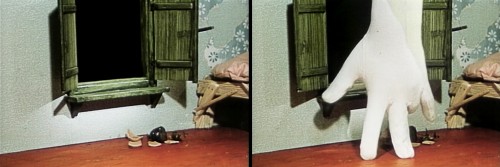 14
14
A giant hand bursts through the window knocking the plant to the ground.
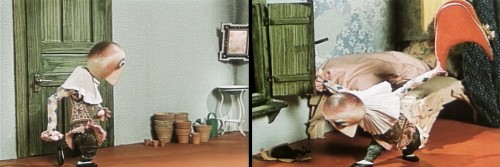 15
15
The potter goes through the same formality of bowing, good morning, to the hand.
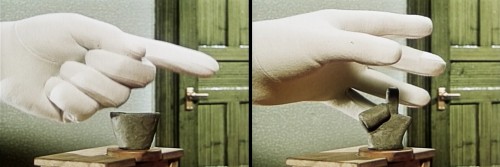 16
16
The hand tells the potter he wants a commissioned statue of himself.
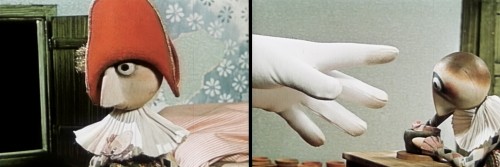 17
17
The potter says “NO” many times.
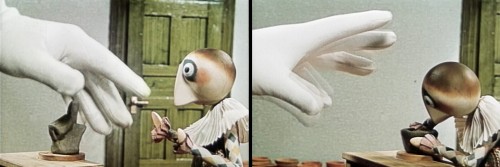 18
18
Even rushing to get back to creating a new pot.
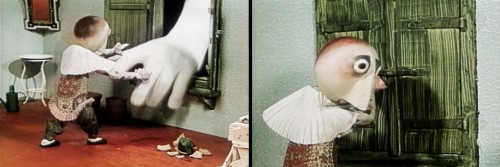 19
19
Then he pushes the hand out of the shop . . .
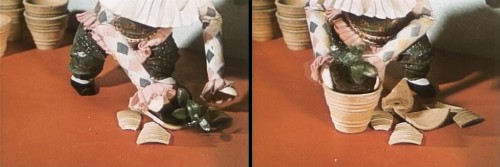 20
20
. . . and he attends to the damaged plant.
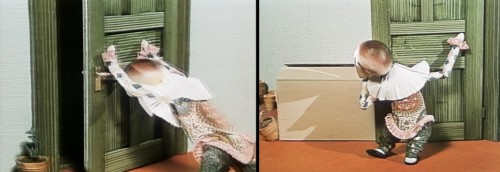 21
21
The hand is back again and the potter tries to keep him out.
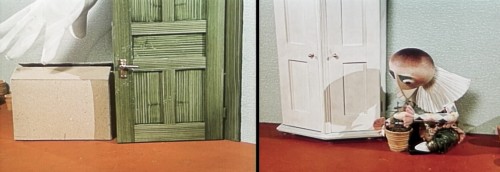 22
22
The hand pushes in a cardboard box.
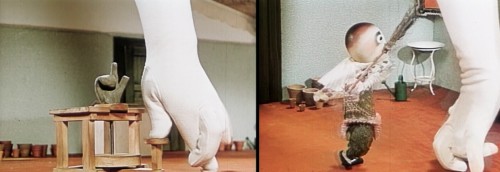 23
23
The hand bursts out and impatiently demands a statue of himself.
The potter pulls out a broom.
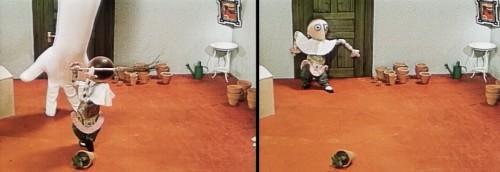 24
24
He uses the broom to push the hand out the door.
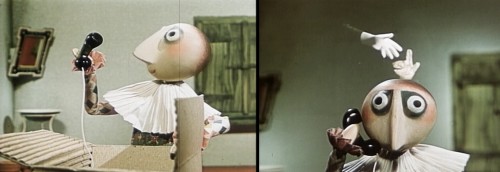 25
25
A phone rings in the crardboard box, and the potter answers it.
The phone demands the statue . . .
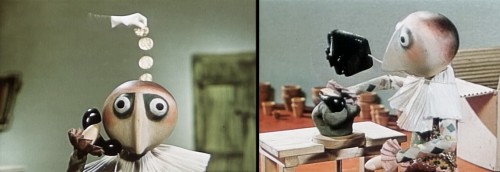 26
26
. . . and offers lots of money.
The potter throws the phone away.
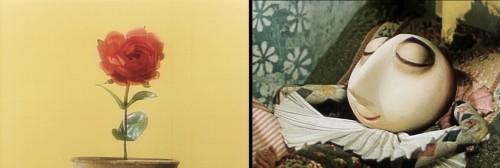 28
28
He dreams of flowers until he’s awakened.
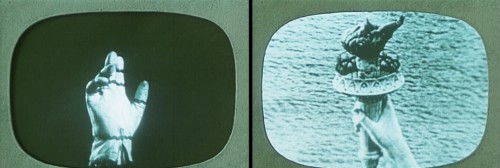 31
31
We see many examples of great hands in history.
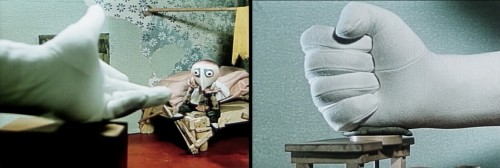 33
33
Again the hand implores and then demands the statue.
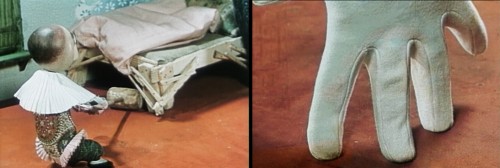 34
34
The sculptor drags a heavy mallet out from under the bed.
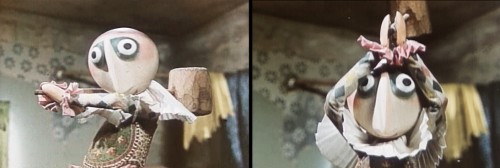 35
35
He swings it at the hand to get rid of him.
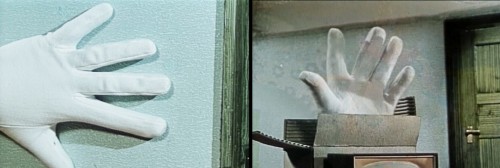 36
36
The hand goes into the box.
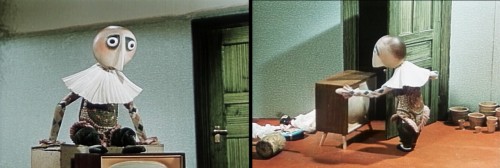 37
37
The sculptor pushes the box and the tv out the door.
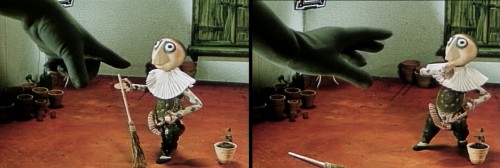 39
39
In no time the hand is back . . . demanding.
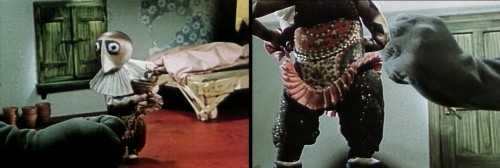 40
40
The sculptor stands resistant.
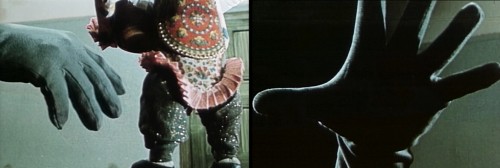 41
41
He’s pushed back into a corner.
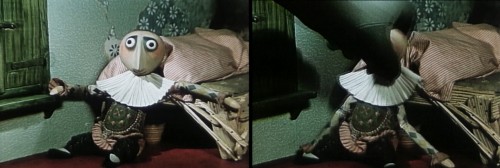 42
42
The hand grabs him by the head.
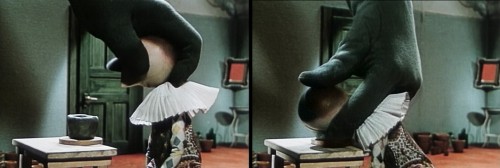 43
43
And he is dragged to the potter’s wheel.
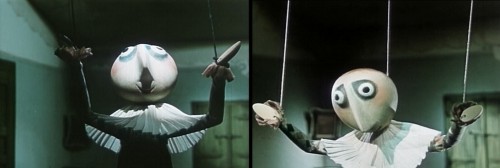 45
45
He makes a marionette of the potter.
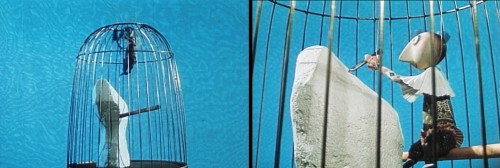 46
46
The potter’s encaged and forced to sculpt the statue.
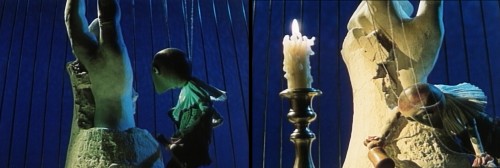 48
48
He’s forced to work endless days and nights sculpting.
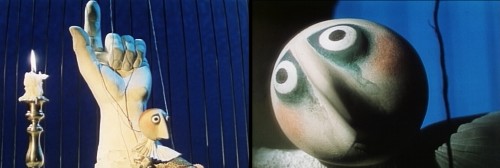 49
49
Until, finally, the statue is completed.
 50
50
The sculptor uses the statue to crash through the bars of the cage.
 51
51
He jumps free of the bondage of the “State.”
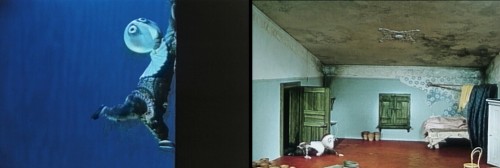 52
52
Eventually, damaged, he makes his way back home.
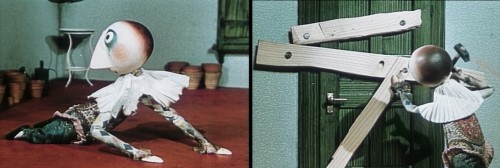 53
53
He boards up the door and window.
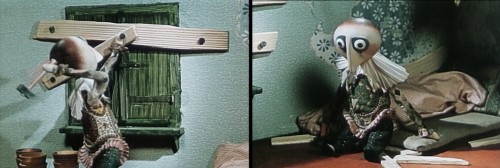 54
54
He cares for the hurt plant.
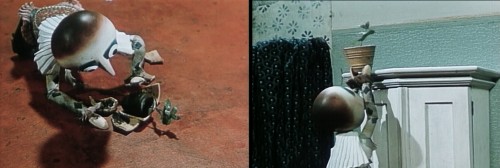 55
55
And places it in a secure spot out of reach.
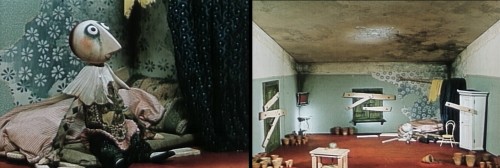 56
56
The sculptor is haunted by the sound of the hand.
He dies.
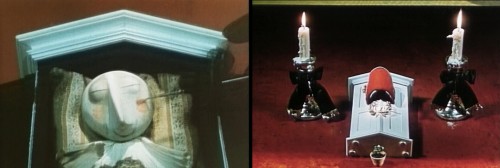 57
57
The hand enters, places him in a casket he makes of the cabinet.
(Thus destroying the plant.)
Illustration &Trnka 30 May 2009 08:24 am
Trnka’s Grimm
- Jiri Trnka is one of my heroes. His sense of design is as gorgeous as his puppets. There’s a feminine delicacy wrapped around a very masculine strength. The same is true of his puppet films. Look at any frame of The Archangel Gabriel or Midsummer Night’s Dream.
We don’t often see Trnka’s illustrations, so I’ve decided, for my own entertainment, to post a few of those in the Grimm’s Fairy Tales book. You can still find copies of this republished many times over. (I suspect the manuscript and illustrations are in public domain.)
Here are about half of the book’s illustrations:
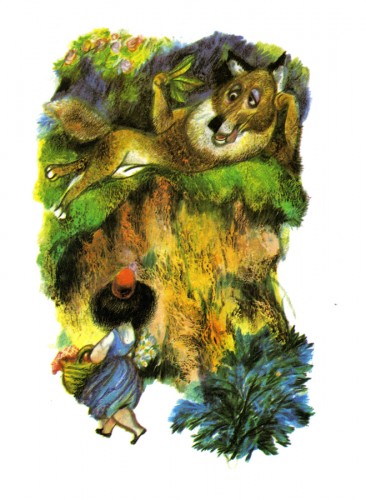
Red Riding Hood
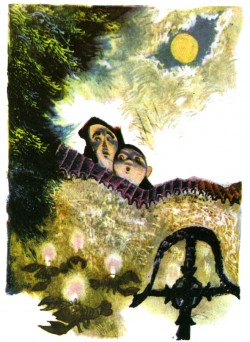
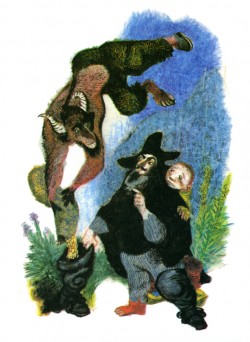
The Master Thief | The Grave Mound
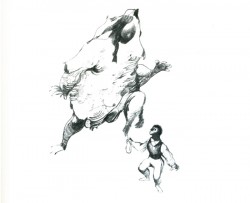
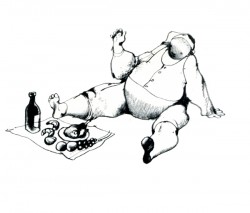
The Spirit in the Bottle | The Wishing Table, the Gold Ass & the Cudgel
Articles on Animation &Puppet Animation &Trnka 30 Dec 2008 09:11 am
Trnka – 79
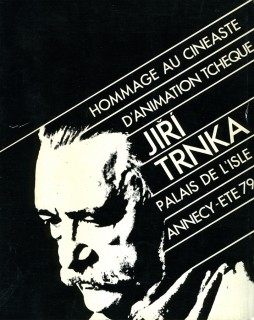 - In 1979, the Annecy animation festival celebrated the work of Jiri Trnka.
- In 1979, the Annecy animation festival celebrated the work of Jiri Trnka.
They produced a companion booklet for the film program and art exhibition. I’d long ago managed to get my hands on a copy of this booklet and am posting it here for any Trnka fanatics out there.
The artwork in the booklet is somewhat hard to find elsewhere, and the stills from the films are quite nicely chosen. There’s also a comprehensive biography and filmography that was included on very orange paper stock.
There aren’t too many chances to see the films anymore (other than the scattered, poor-quality YouTube pieces) except for the dvd produced by Jon Snyder. The Puppet Films of Jiri Trnka
The booklet is in French, but that shouldn’t be too much of a problem; it’s fairly self-explanatory.
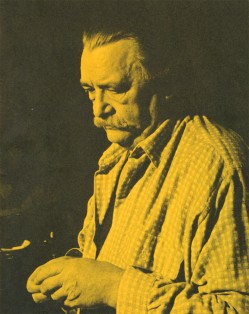
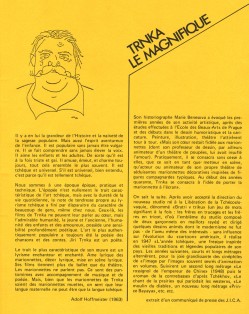
(Click any image to enlarge.)
Books &Puppet Animation &Trnka 17 Nov 2008 09:14 am
Trnka’s “Bayaya”
 – Early in the history of this blog, I wrote quite a bit about Jiri Trnka. This man’s artwork has long been a source of great inspiration to me. His illustrations for the fairy tales of Grimm and Andersen are stunning and the two books are of inestimable value to me. His puppet films are so brilliantly strong and lyrically beautiful that I was overwhelmed when I first saw them, even though his reputation preceded them. I’d read enough about him and owned a magnificent biographical account of his work, that I was confident I would be a bit disappointed when I finally saw the films. I wasn’t.
– Early in the history of this blog, I wrote quite a bit about Jiri Trnka. This man’s artwork has long been a source of great inspiration to me. His illustrations for the fairy tales of Grimm and Andersen are stunning and the two books are of inestimable value to me. His puppet films are so brilliantly strong and lyrically beautiful that I was overwhelmed when I first saw them, even though his reputation preceded them. I’d read enough about him and owned a magnificent biographical account of his work, that I was confident I would be a bit disappointed when I finally saw the films. I wasn’t.
The Hand was magnificent and remains one of my favorite films, to this day.
The Archangel Gabriel and Mother Goose is a beautiful animated puppet film about Venice during the late Middle Ages.
The Midsummer Night’s Dream is a feature-length masterwork that has to be seen for any lover of animation – nevermind puppet animation.
 The film, Bayaya was a mystery to me for many years. It was not an easy film to view. Back in the 70s, there was no video, and seeing Trnka’s films meant trips to the NYPublic Library in NY to visit their collection of 16mm films. There you could watch any of the collection or borrow them to watch at home. These films were often littered with many bad splices where the films had broken. The quality of the colors deteriorated over the years. It made for tough viewing, but it also made it possible to see some of the Trnka canon.
The film, Bayaya was a mystery to me for many years. It was not an easy film to view. Back in the 70s, there was no video, and seeing Trnka’s films meant trips to the NYPublic Library in NY to visit their collection of 16mm films. There you could watch any of the collection or borrow them to watch at home. These films were often littered with many bad splices where the films had broken. The quality of the colors deteriorated over the years. It made for tough viewing, but it also made it possible to see some of the Trnka canon.
Bayaya was not part of this collection. In fact, I’ve only seen part of the film once. John Gati, a NY puppet animator who was a good friend, located a copy of a 20 min excerpt (in Czechoslovakian) for an ASIFA-East screening and showed it to a small audience in a classroom at NYU. The print was black and white, but since I’d only seen B&W illustrations, this made sense.
This film represented a strong change for Trnka. He had previously done a number of cel animated films. These shorts were remarkable in that they were a strong step away from the Disney mold. This was a bold step to take in the animation community in Europe circa 1947.
The film was purely lyrical, and the story accented the folk tales quality of these legends of Prince Bayaya and The Magic Sword. Consolidating the two, he named the film after the hero and made him the embodiment of courage, morality and honor.
Trnka considered Bayaya a turning point in his career. He realized that the puppet film had taken on new strength and he had to follow through with every film thereafter.
Here are a couple of scenes from the Trnka book I treasure, Jiri Trnka: Artist & Puppet Master.
There are two parts of a documentary on Trnka available via YouTube. They’re worth the watch. Part 1, Part 2.
Articles on Animation &Puppet Animation &repeated posts &Trnka 17 Sep 2008 07:31 am
Trnka Graphis revisited
I love Jiri Trnka’s work, and in June 2006 I posted this. It’s worth revisiting.
- To continue with my interest in animators that leave fingerprints, I return to the father of all puppet animators, Jiri Trnka. I have this Graphis Magazine article from 1947. This was published before any of the great Trnka films: The Hand, Archangel Gabriel and Mother Goose, Midsummer’s Night Dream.
Regardless, there are still some beautiful images in his earlier work.
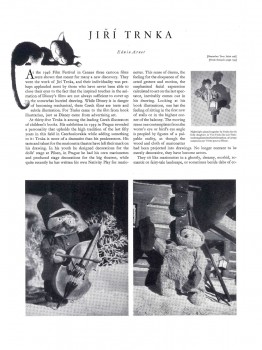
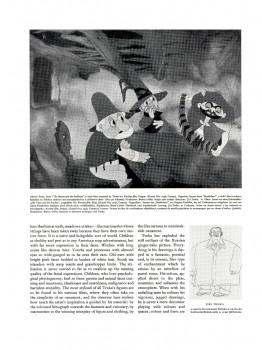
(Click on any image to enlarge.)
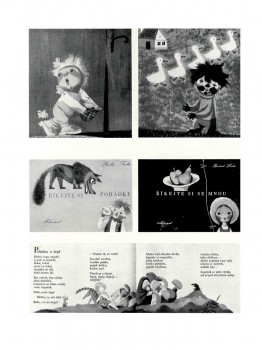
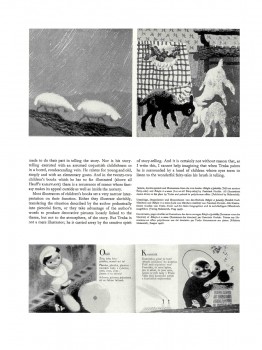
(Note: Graphis printed in three languages; all of the English is included.)
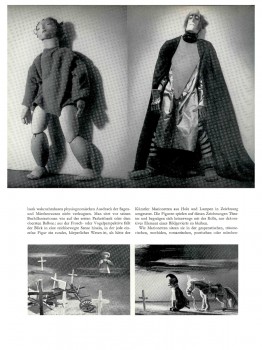
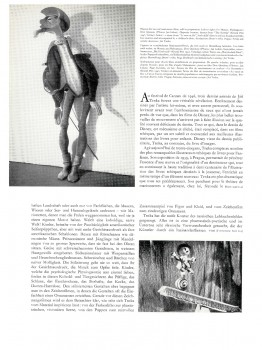
Animation Artifacts &Puppet Animation &Trnka 03 Nov 2007 08:23 am
Trnka’s Merry Circus
 – I’ve been a fan of Jirà Trnka‘s work since I first saw it back in the 60′s. I’ve bought every publication I’ve ever found which discusses or displays his films or illustration. These days I can also own a number of his films.
– I’ve been a fan of Jirà Trnka‘s work since I first saw it back in the 60′s. I’ve bought every publication I’ve ever found which discusses or displays his films or illustration. These days I can also own a number of his films.
His puppet films were always the gold standard of that medium. However, since I’ve studied his illustrations for many years, I’m always interested in the 2D work he’s done.
The dvd titled The Puppet Films of Jirà Trnka includes one of these 2D films. It’s cut-out animation, so it really borders the world between 2D and 3D. Trnka exploits the shadows on his constructed cardboard backgrounds to great effect. The style purposefully hides the three dimensions of the constructions, but it uses it when it needs to. The film is a delicate piece which just shows a number of acts in a local circus setting.
It’s a sweet film with a quiet pace. I’m not sure it could be done in today’s world of snap and speed. No one seems to want to take time to enjoy quiet works of art.
I’m posting a number of frame grabs from this short so as to highlight the piece.

Note the real shadows on the background.
These were obviously animated on glass levels in a multiplane setup.



Again, note the excellent use of shadows. It’s very
effective in these long shots of the trapeze artists.



Books &Trnka 28 Aug 2007 07:47 am
My Puppet Friends
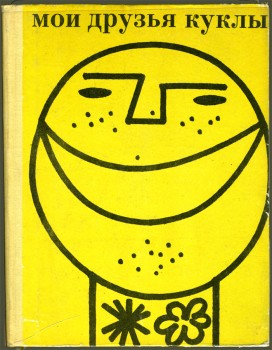 – I have a book I love even though I can’t read it. It’s a Russian history of 3D puppet animation. Of course, 90% of the book features Russian animators; however, even they weren’t able to avoid discussing Jiri Trnka‘s work.
– I have a book I love even though I can’t read it. It’s a Russian history of 3D puppet animation. Of course, 90% of the book features Russian animators; however, even they weren’t able to avoid discussing Jiri Trnka‘s work.
The book, titled “My Puppet Friends,” was published in Moscow in 1971.
I’m able to pick out words here and there that I can translate, but for the most part I look at the pictures and try to translate the captions. (Basically, I’m saying I’m too lazy to really try to translate it with my kindergarten Russian knowledge. I may as well put it through Babelfish and get their gibberish-translations.)
Today I thought I’d post a couple of images which are in the book. The photos look like they were taken in the 30′s even though the book was published in the 70′s. I like seeing shots of animators really going at it working the puppets. Needless to say, none of the films are familiar to me. “Peter and the Wolf” is the only familiar title, though I don’t know this Russian version.
There’s a section which features a bit of storyboard and that same section from the director’s workbook. It’s interesting to see how they’re layed out. Let’s start with those images.
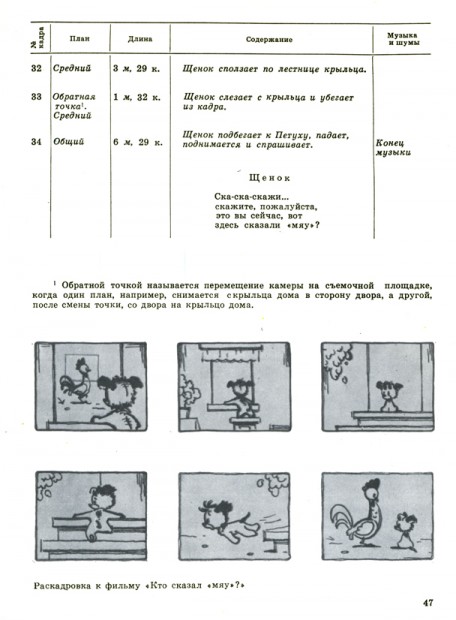
Obviously the storyboard sits on the bottom of these pages. The film’s title is “Who said ‘Mine’?” I haven’t heard of it or seen it.
The workbook section is broken into several columns reading:
____Number of the sequence / Plan / Length / Content / Music & Effx
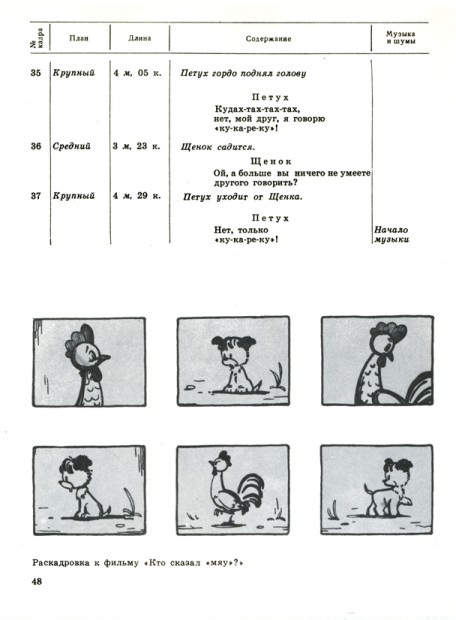
Here are a couple of photographs I find interesting:
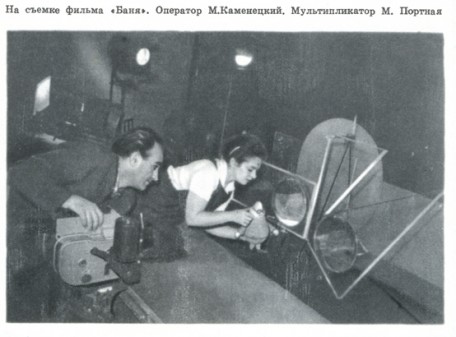
The caption under this photo reads:
On filming “Vanya”. Cameraman M.Kamenetskiy. Animator M. Portnaya.
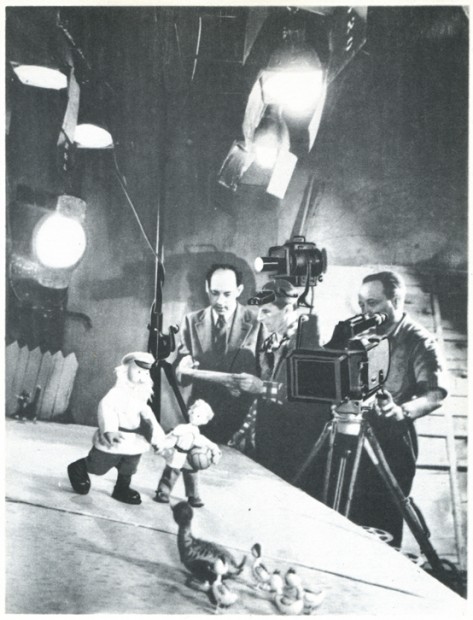
This picture is captioned: On filming “Peter and the Wolf”. Director A. Karanovich,
Animator P. Zhdanov, Cameraman T. Bunimovich.
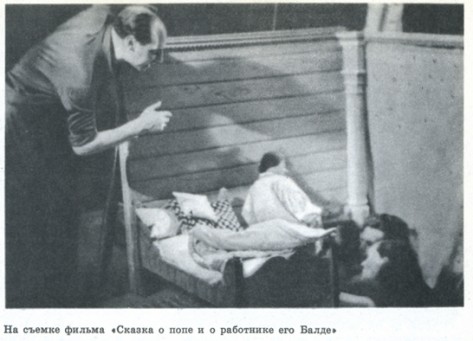
This caption reads: On filming the fairy tale of “The Priest and the Worker Baldes.”
Obviously, this is the famous tale we all know by heart.
The book goes into some detail on a couple of cut-out animators. In the near future
I’ll post some of those images. Enough fuzzy photos for now, though.
Books &Puppet Animation &Trnka 29 May 2007 08:05 am
3D Puppet Book Corner
I’ve written about a lot of books on 2D animation, but I also love 3D puppet animation and have a small collection of books on the subject.
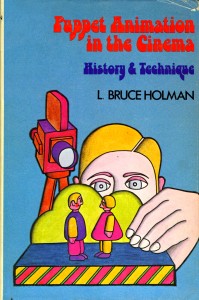 – Bruce L. Holman’s book, Puppet Animation in the Cinema: History and Technique was originally published in 1975 and can only be located today in old book bins (meaning Amazon or ebay). It’s a real primer on the medium, and when it was published was the only one of its kind.
– Bruce L. Holman’s book, Puppet Animation in the Cinema: History and Technique was originally published in 1975 and can only be located today in old book bins (meaning Amazon or ebay). It’s a real primer on the medium, and when it was published was the only one of its kind.
The book does exactly what its title says, it gives a history of the form and tells how the films are made. There are photos of a lot of European puppetmakers and stills from their films. I think David Allen is the only important American who makes it into the book. But then, at the time, that’s pretty much what the landscape described. Loving Jiri Trnka, as I do, I was quite pleased to see quite a bit of space devoted to him, and, of course, that’s as it should have been at the time.
The book stood on its own for quite some time, and those of us who love puppet films loved this book.
_____________
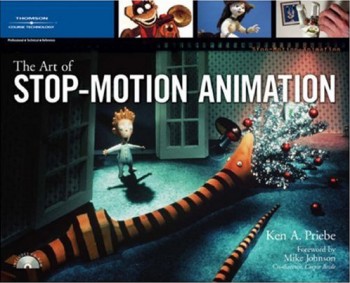 – Another book that you CAN get your hands on is Ken Priebe‘s The Art of Stop-Motion Animation. It brings things more current clearly explaining how puppet films are made, how to construct puppets of your own and how to make films of these puppets. There’s also a chapter on the history of the medium.
– Another book that you CAN get your hands on is Ken Priebe‘s The Art of Stop-Motion Animation. It brings things more current clearly explaining how puppet films are made, how to construct puppets of your own and how to make films of these puppets. There’s also a chapter on the history of the medium.
It’s a real nuts-and-bolts book that gives a clear demonstration of the process and a commendable how-to approach.
It’s obvious that Priebe loves puppetry and invests that love in the writing. This is a good book for anyone thinking of trying the medium and/or making a living of it.
_____________
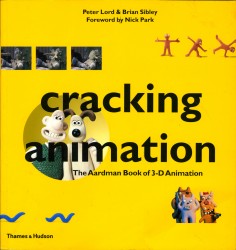 – Because the market for this medium is slim, there are a number of excellent books about the medium which exist to promote filmmakers. One such book is Cracking Animation by Peter Lord and Brian Sibley; it’s the story of Aardman and the making of their 3D animation. It’s amazing how many animation books Sibley has been connected to.
– Because the market for this medium is slim, there are a number of excellent books about the medium which exist to promote filmmakers. One such book is Cracking Animation by Peter Lord and Brian Sibley; it’s the story of Aardman and the making of their 3D animation. It’s amazing how many animation books Sibley has been connected to.
The book goes into nice depth in illustrating the history of 3D animation and moves from there to show how the Aardman puppet films are made. Nice illustrations show all of the phases with lots of stills of armatures, walk cycles, sets and animators. It’s a solid book with a lot of information. I believe later editions of the book have been updated to feature more recent films.
Of course, it’s Aardman-centric, but that’s not such a bad thing.
_____________
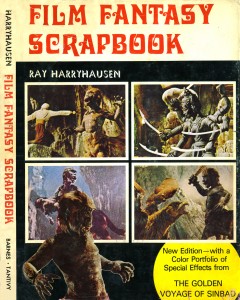 – Another book that puts its focus on one individual is this Film Fantasy Scrapbook by Ray Harryhausen.
– Another book that puts its focus on one individual is this Film Fantasy Scrapbook by Ray Harryhausen.
Of course, Harryhausen is the “auteur” who created all those stop motion monsters and sci-fantasy films. (Anyone who has seen Jason and the Argonauts can only remember those incredible fighting skeletons.) This book is literally a scrapbook of stills and posters and illustrations showing off Harryhausen’s career up to 1972, when the book was published.
It’s all in B&W and one wishes there were more back stage imagery as you see in the Aardman book. It’s really more of a “fanzine” type book, but if you’re at all a Harryhausen fan, you’d love owning the book.
Harryhausen has written a number of other books about his film work. I don’t own any, but The Art of Ray Harryhausen looks like it might be good. Unfortunately I was never a wildly enthusiastic fan of this type of special effects animation, so I haven’t gone wild over his books. The only reason I include this book here is that you can’t mention 3D animation without referencing Harryhausen.
_____________
- Finally, let me showcase the book The Corpse Bride: An Invitation to the Wedding by 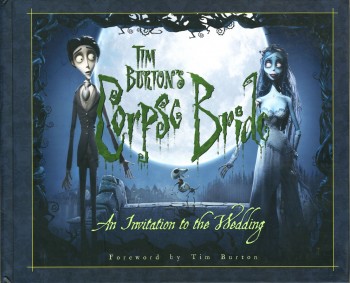 Mark Salisbury.
Mark Salisbury.
This is an out-and-out promotional book for the film. However, it really gives a state-of-the-art demo to show how studio puppet films are made. The book includes lots of backstage photos which go into detail about how certain scenes were created. This is a variant on the excellent book done to promote The Nightmare Before Christmas.
We’re shown how some scenes combined 3D puppets with 3D cgi (a technique all puppet animation films include these days.) The details of the odd digital photography are explained fully and illustrated in detail.
Considering the obvious devotion Tim Burton seems to have for 3D puppet animation, it’s worth watching closely. Having made Vincent, Nightmare Before Christmas, The Corpse Bride and, now in production, 9 Burton has become one of the most important advocates of the medium.
